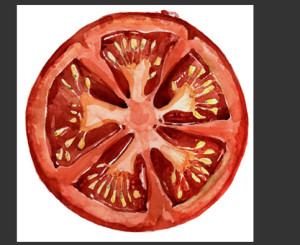Tomatoes may be minimally processed to obtain ready-to-eat products, and these steps include selection, washing, cleaning, stem removal, cutting, packaging and storage.
 Epidemiological data from the EU have identified one salmonellosis outbreak and one Norovirus outbreak associated with tomato consumption between 2007 and 2012. Risk factors for tomato contamination by Salmonella and Norovirus were considered in the context of the whole food chain.
Epidemiological data from the EU have identified one salmonellosis outbreak and one Norovirus outbreak associated with tomato consumption between 2007 and 2012. Risk factors for tomato contamination by Salmonella and Norovirus were considered in the context of the whole food chain.
Available estimates of the Salmonella and Norovirus occurrence in tomatoes were evaluated together with mitigation options relating to prevention of contamination and the relevance of microbiological criteria. It was concluded that each farm environment represents a unique combination of risk factors that can influence occurrence and persistence of pathogens in tomato production.
Appropriate implementation of food safety management systems including Good Agricultural Practices (GAP), Good Hygiene Practices (GHP) and Good Manufacturing Practices (GMP), should be primary objectives of tomato producers. The current lack of data does not allow the proposal of a Hygiene Criterion for E. coli at primary production of tomatoes and it is also not possible to assess the suitability of an EU-wide E. coli Process Hygiene Criterion.
There are Food Safety Criteria for the absence of Salmonella in 25 g samples of ready-to-eat pre-cut tomatoes as well as in unpasteurised tomato juice placed on the market during their shelf life. A Food Safety Criterion for Salmonella in whole tomatoes could be considered as a tool to communicate to producers and processors that Salmonella should not be present in the product.
Testing of tomatoes for Salmonella could be limited to instances where other factors indicate breaches in GAP, GHP, GMP or HACCP programmes. It is currently not possible to provide a risk base for establishing a Norovirus Food Safety Criterion for these foods.
